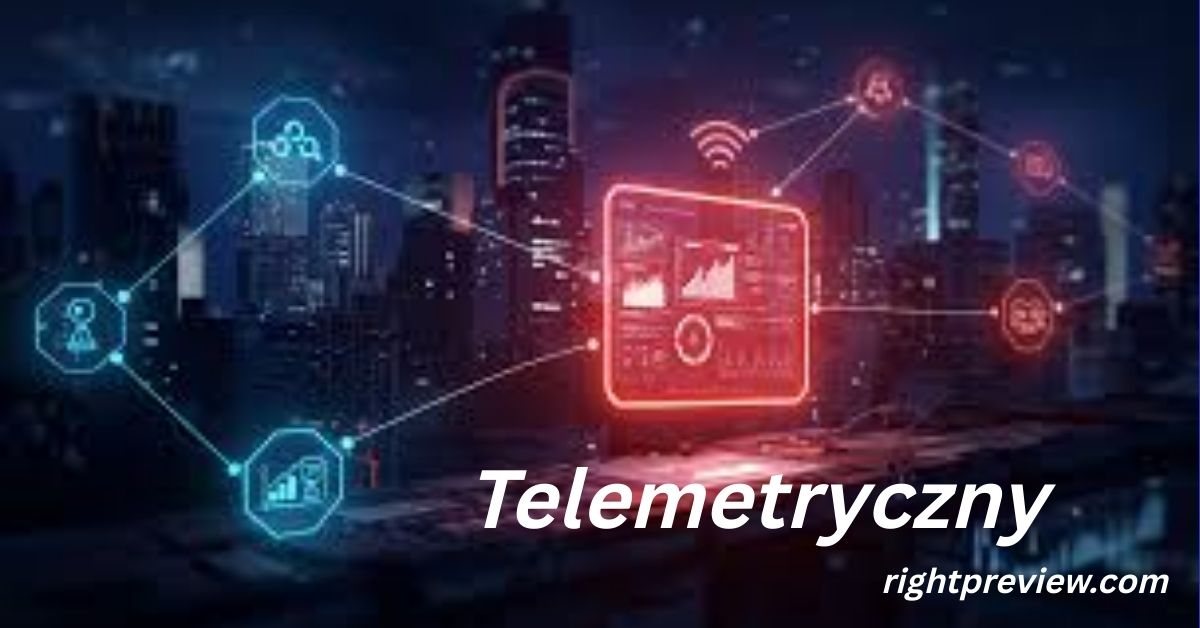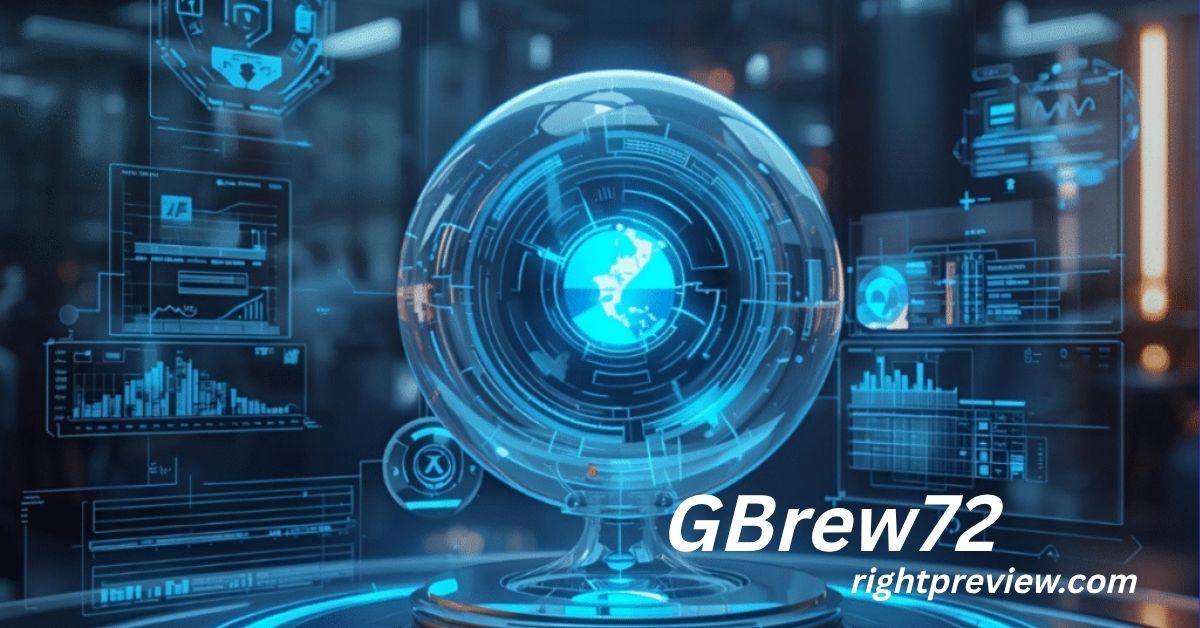In today’s digital world, remote data collection and transmission systems have become fundamental for industries worldwide. One term that embodies this transformative technology is telemetryczny. Rooted in the Polish word “telemetria,” telemetryczny refers to systems and technologies that enable automatic measurement, collection, and transmission of data from remote or inaccessible locations to receiving stations for monitoring, analysis, and decision-making. These systems play a crucial role in a variety of sectors, such as healthcare, automotive, agriculture, space exploration, and manufacturing.
With the rapid expansion of connected devices and real-time monitoring tools, telemetryczny has become integral in making data-driven decisions, improving efficiency, and ensuring safety. This article delves deep into the concept, operation, applications, benefits, challenges, and future of telemetry, providing you with a comprehensive understanding of its significance.
What Is Telemetryczny?
Telemetryczny is the Polish term for telemetry, which involves the automated collection and transmission of data from remote locations. It allows for real-time data monitoring and analysis by collecting data from various sources and transmitting it to a central system for observation and decision-making. Telemetry systems are widely used across several industries, offering significant improvements in operational efficiency, safety, and decision-making.

At its core, telemetryczny systems enable the measurement and transmission of data from remote locations to receiving systems, which may be far from the source of the data. These systems work by using sensors, transmitters, and receivers that work in unison to send data over long distances, making them invaluable in environments where direct observation is not possible or practical.
How Telemetryczny Systems Operate
A typical telemetryczny system involves several interconnected components that work together to provide remote monitoring and data transmission capabilities:
1. Sensors
Sensors are the first component of a telemetryczny system. These are specialized devices designed to measure physical, environmental, or biological variables. Sensors can measure a variety of parameters, such as temperature, pressure, humidity, pH, heart rate, glucose levels, and many others depending on the application.
For example, in a healthcare setting, a sensor may be placed on a patient to monitor their heart rate, while in an agricultural setting, soil moisture sensors can measure moisture levels in the field.
The data gathered by the sensors is critical, as it forms the foundation for any further analysis or actions in the telemetry system.
Also Read: Infector Virus: What It Is, How It Works & How to Protect Your Computer
2. Transmitters
After the sensors collect the data, it is sent to transmitters, which act as intermediaries. Transmitters convert the analog or digital signal generated by the sensor into a format that can be transmitted through communication channels. Transmitters can use a variety of technologies to send the data to the next stage, including wireless options such as Wi-Fi, Bluetooth, cellular networks, satellite communication, or Zigbee.
In the case of telemetry systems in remote locations, satellite transmission may be the most effective method to ensure that data can be sent over vast distances. The type of transmission method chosen depends largely on factors like range, data speed, and environmental considerations.
3. Receivers
Receivers are another vital component of a telemetryczny system. The receiver’s role is to collect the transmitted data from the transmitter and send it to the processing unit for analysis. The receiver typically operates as a data collection hub, where all transmitted data from sensors is gathered.
Receivers may include devices such as base stations, cloud servers, or local computing units. In the case of a large-scale system, multiple receivers may be used in different geographic locations to aggregate the data from multiple sensors across an extensive area.
4. Processing Units
Once the data is received, it is sent to a processing unit. These units may be hardware-based systems or software-driven platforms designed to analyze the incoming data. This data is processed in real-time, allowing for quick decision-making. Often, cloud computing platforms or edge computing solutions are used for data processing, enabling more efficient analysis and immediate reporting.
The processing unit may utilize artificial intelligence (AI) and machine learning algorithms to spot patterns in the data, run predictive models, or trigger alerts when specific thresholds are exceeded.
5. User Interfaces
The final component of telemetryczny systems is the user interface. After data is processed and analyzed, it is displayed to end-users through a visual interface such as a dashboard or application. These interfaces are designed to provide actionable insights and allow for real-time decision-making.
For example, in a healthcare setting, doctors and healthcare providers can view the patient’s vital signs through a dedicated app or dashboard, making it easier to track progress and adjust treatments. Similarly, in an industrial environment, operators may use a dashboard to monitor machinery and receive alerts when maintenance is needed.
Applications of Telemetryczny Systems
The versatility of telemetryczny systems allows them to be applied in a variety of industries, each benefiting from remote data collection and real-time analysis.
1. Healthcare
Telemetryczny systems are revolutionizing healthcare by enabling continuous patient monitoring. Wearable devices, such as heart rate monitors, blood glucose monitors, and ECG machines, use telemetry to collect vital data from patients and transmit it to healthcare providers.
For instance, heart monitoring systems are used to track the heart activity of patients with cardiovascular disease. Data is sent from the wearable device to a healthcare provider in real time, ensuring that any irregularities are detected immediately. This system reduces hospital visits, minimizes readmissions, and empowers patients to manage chronic conditions more effectively.
Also Read: Tikcotech: The All-in-One App for Managing Apps, Playing Games, and Listening to Music
2. Automotive Industry
In the automotive industry, telemetryczny systems are deployed to monitor vehicle performance. These systems gather data on engine performance, tire pressure, fuel efficiency, and other key metrics, allowing fleet operators to ensure that vehicles are running efficiently.
For example, many modern cars are equipped with onboard telemetry systems that collect data and send it to the manufacturer for analysis. This information helps car manufacturers improve the design of future models and allows them to offer predictive maintenance, notifying drivers when it’s time to service their vehicles.
3. Agriculture
Telemetry systems in agriculture, often referred to as precision farming, are transforming the way crops are managed. Telemetryczny technologies such as soil moisture sensors, temperature monitors, and weather stations provide farmers with critical data that can optimize crop management and improve yields.
Farmers can remotely monitor soil conditions, moisture levels, and weather patterns, allowing them to adjust irrigation schedules, apply fertilizers, and manage pests more effectively. This leads to better resource use and higher crop yields, ultimately benefiting both the economy and the environment.
4. Space Exploration
Space agencies have been utilizing telemetryczny systems for decades. In space exploration, telemetry systems are critical for monitoring spacecraft and satellites in orbit. Telemetry data is used to track the spacecraft’s health, fuel levels, velocity, and other performance indicators.
For instance, NASA’s Apollo missions relied on telemetry to gather real-time data from spacecraft, which helped the ground control team make vital decisions and troubleshoot issues during missions. In modern space exploration, telemetry plays a key role in enabling remote control of space probes, satellites, and other robotic missions.
5. Industrial Automation
In industrial settings, telemetryczny systems are deployed to monitor machinery and industrial equipment. These systems can measure temperature, vibration, pressure, and other critical factors in real time, ensuring that equipment operates within safe limits.
Industrial telemetry helps in predictive maintenance, reducing downtime, and extending the lifespan of equipment. For example, in manufacturing plants, telemetryczny systems can alert managers when machines are close to failure, allowing them to perform maintenance before costly breakdowns occur.
Benefits of Telemetryczny Systems
1. Real-Time Monitoring
One of the primary advantages of telemetryczny systems is the ability to monitor data in real time. This means that operators, healthcare professionals, and decision-makers can access up-to-date information as soon as it is collected, enabling swift responses to emerging situations.
In critical sectors like healthcare, this could mean the difference between life and death. For example, if a patient’s heart rate suddenly spikes, doctors can be alerted immediately to take action.
2. Cost Efficiency
By automating data collection and eliminating the need for manual intervention, telemetryczny systems help organizations save money. For example, in the automotive industry, data transmitted from vehicles can help identify problems before they lead to breakdowns, saving money on costly repairs.
Furthermore, telemetryczny systems reduce the need for onsite inspections and manual reporting, freeing up valuable resources that can be used for other critical tasks.
3. Predictive Maintenance
Another key advantage of telemetry systems is predictive maintenance. By continuously monitoring equipment and analyzing data for signs of wear and tear, telemetryczny systems help organizations anticipate and prevent equipment failure.
Also Read: Moodle Gettysburg: The Complete Guide for Students and Faculty
For example, in manufacturing, telemetryczny systems can track vibration or temperature changes in machinery and alert operators when parts are starting to wear out. This proactive approach can significantly reduce the cost of repairs and avoid unscheduled downtime.
4. Enhanced Safety
Real-time monitoring of critical systems allows for immediate action if something goes wrong. In industrial settings, telemetryczny systems can detect equipment malfunctions or hazardous conditions such as overheating or gas leaks. These systems can trigger alarms and send alerts to operators, helping prevent accidents and ensuring worker safety.
5. Data-Driven Decisions
Telemetryczny systems provide valuable insights into the performance of equipment, systems, and processes. By gathering large amounts of data, these systems help organizations make informed decisions based on actual performance rather than estimates or assumptions.
For instance, data collected from telemetryczny systems in the automotive industry can be used to optimize fuel efficiency, while in healthcare, patient data can be used to tailor treatments and improve care outcomes.
Challenges in Implementing Telemetryczny Systems
Despite their numerous benefits, the implementation of telemetryczny systems presents some challenges:
1. Data Security
The collection and transmission of sensitive data can pose significant security risks. Telemetryczny systems, especially in industries like healthcare and finance, must implement strong encryption methods to protect data during transmission. Without proper security measures, data breaches and cyberattacks could compromise the system and violate privacy regulations.
2. Connectivity Issues
Maintaining reliable connectivity is essential for the smooth functioning of telemetryczny systems. In remote locations, such as rural farms or offshore oil rigs, maintaining stable communication channels can be challenging.
3. Integration with Existing Systems
Integrating telemetryczny systems with legacy systems can be complex, requiring significant time and resources. In many cases, organizations must update their infrastructure or invest in new technology to support the telemetry system.
4. Data Overload
The massive amounts of data generated by telemetry systems can be overwhelming. Managing, storing, and analyzing this data is crucial to ensure that the system remains efficient and that valuable insights can be extracted from the data.
The Future of Telemetryczny
As technology continues to evolve, so too does the potential of telemetryczny systems. With advancements in 5G, AI, and IoT, the future of telemetry systems looks more interconnected, smarter, and more capable than ever before.
1. 5G Connectivity
With the roll-out of 5G technology, the speed and reliability of data transmission will improve drastically. This will enable real-time monitoring with lower latency, which is critical in applications like autonomous vehicles or healthcare monitoring.
2. Artificial Intelligence
AI-driven analysis will become increasingly important in the future of telemetryczny systems. By integrating machine learning algorithms, these systems will not only gather and transmit data but also analyze it to predict outcomes and optimize decision-making processes.
3. Edge Computing
Edge computing allows for the processing of data closer to the source, reducing the strain on centralized data centers and enabling faster response times. This will be especially important for real-time applications like industrial monitoring or autonomous vehicles.
Also Read: 5starsstocks.com Nickel: Complete Guide for Investors in 2025
4. Internet of Things (IoT)
The IoT will continue to expand the scope of telemetryczny applications by connecting even more devices and sensors. This interconnected network of devices will allow for even more comprehensive monitoring and decision-making, particularly in industries like agriculture, healthcare, and smart cities.
FAQs About Telemetryczny
Is telemetryczny the same as telemetry?
Yes, “telemetryczny” is the Polish word for telemetry. Both terms refer to the same concept of remote measurement and transmission of data.
How does telemetryczny benefit healthcare?
Telemetryczny systems enable continuous patient monitoring, allowing healthcare providers to track vital signs in real time, detect problems early, and reduce hospital visits.
Can telemetryczny systems be used in remote areas?
Yes, telemetryczny systems can use satellite communication or other wireless technologies to transmit data from remote locations where traditional infrastructure is unavailable.
Are there privacy concerns with telemetryczny systems?
Yes, data transmitted through telemetryczny systems must be securely encrypted to protect user privacy. Privacy regulations like HIPAA (in healthcare) must be followed.
What industries benefit the most from telemetryczny?
Industries such as healthcare, automotive, agriculture, space exploration, and manufacturing all benefit from telemetryczny systems.
Conclusion
Telemetryczny systems are the future of remote monitoring and data analysis. By providing real-time data transmission across industries, they allow for more informed decision-making, enhanced safety, and increased operational efficiency. As technology continues to evolve, these systems will become even more powerful and integrated, offering unprecedented capabilities for businesses and organizations worldwide.




